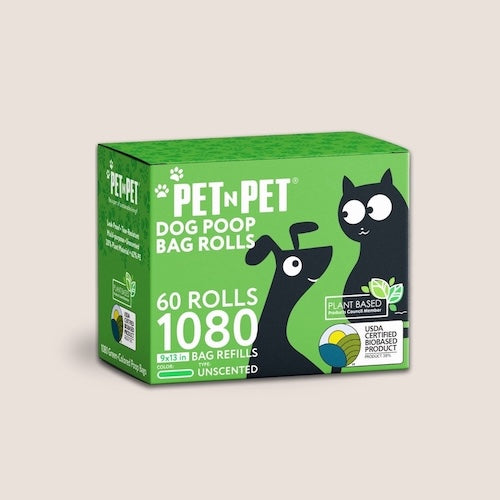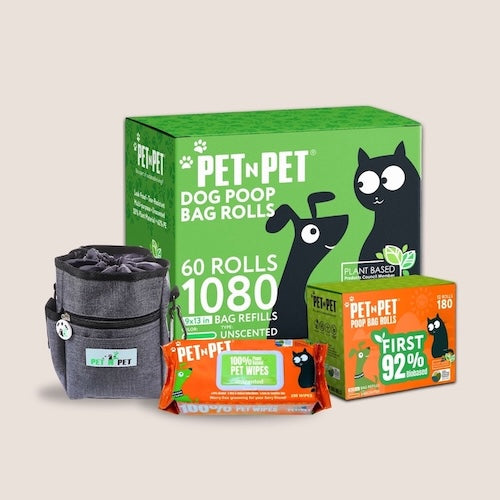
Can My Dog Get Fleas from the Beach? Here’s What You Need to Know
As dog owners, we love bringing our furry friends to the beach. However, beaches can harbor unexpected flea risks. Fleas thrive in warm, sandy environments and can latch onto your dog during beach outings. Here’s everything you need to know about why beaches attract fleas and how to keep your dog protected, using some handy products from Pet N Pet for added peace of mind.
Why Fleas Thrive on Beaches
Fleas find beaches particularly inviting, especially in warmer climates. Here’s why:
1. Warm and Sandy Environment
Fleas are drawn to warm, moist places, and sand traps heat, creating an ideal place for fleas to hide, breed, and multiply. So, while you and your dog are basking in the sun, fleas are quietly thriving in the sand.
2. Close Encounters with Other Animals
Beaches are popular hangouts not only for dogs but for various creatures, including birds and small wildlife. When your dog mingles with these animals or sniffs around, they risk picking up fleas, as fleas can easily transfer from one animal to another.
3. Coastal Vegetation: Flea Hideouts
Beachside vegetation, especially tall grasses and shrubs, provides excellent hiding spots for fleas. Dogs exploring these areas may unknowingly pick up some unwanted pests.
How to Keep Your Dog Flea-Free on Beach Days
A few proactive steps can help prevent flea issues, and Pet N Pet offers products that can assist in your routine:
1. Use Preventative Flea Treatments
Start with flea preventatives if you’re planning frequent beach trips with your dog. Monthly treatments like flea collars, topical treatments, or oral medications offer robust protection. Pairing this with regular grooming is essential for flea control.
2. Perform a Post-Beach Flea Check
Before heading home, give your dog a thorough check. Pay special attention to their belly, tail, and around the ears – prime hiding spots for fleas. You can also use the Pet N Pet Dog Wipes (100 Count) for a quick clean, removing any sand and potential flea dirt from your dog’s coat. This is an easy way to freshen up your pup and help remove any lingering pests.
3. Bathe Your Dog After Beach Time
Fleas have a harder time clinging to a clean coat, so a quick rinse or bath after the beach can help. A gentle, pet-friendly shampoo will keep your dog’s skin and coat fresh and pest-free.
4. Regular Grooming and Flea Combing
Regular grooming with a flea comb can help spot fleas early on. After the beach, brushing your dog’s coat helps catch any stragglers. If you’re training your dog to stay calm during grooming, consider bringing treats in the Pet N Pet Dog Treat Pouch for positive reinforcement.
Spotting Fleas on Dogs: What to Look For
Even with preventative measures, knowing the signs of fleas is essential. If your dog starts scratching more than usual or has red or irritated skin, it could be a sign they’ve picked up fleas. Flea dirt (small, dark specs on the skin) is another indicator.
Recommended Products from Pet N Pet
For a smooth and hassle-free beach day, consider these products to add to your routine:
• Dog Wipes Cleaning Deodorizing (100 Count): Perfect for a quick clean after beach outings, these wipes help remove sand and potential flea dirt from your dog’s coat, making it easier to spot any pests.
• Pee Pads for Dogs (50 Count): Useful for maintaining hygiene, especially if you’re staying in pet-friendly accommodations. These pads ensure a clean environment and make it easier to spot flea dirt or ticks.
• Dog Treat Pouch For Pet Training: Ideal for carrying treats during beach walks or post-beach grooming sessions, making training and rewarding your dog convenient.
Enjoy the Beach Without the Fleas
With a little planning and these flea prevention tips, you can enjoy a worry-free day at the beach with your dog. It’s easier to prevent fleas than to treat an infestation, so take proactive steps to protect your dog. Let Pet N Pet products support your routine and help you focus on making unforgettable memories with your furry friend!






